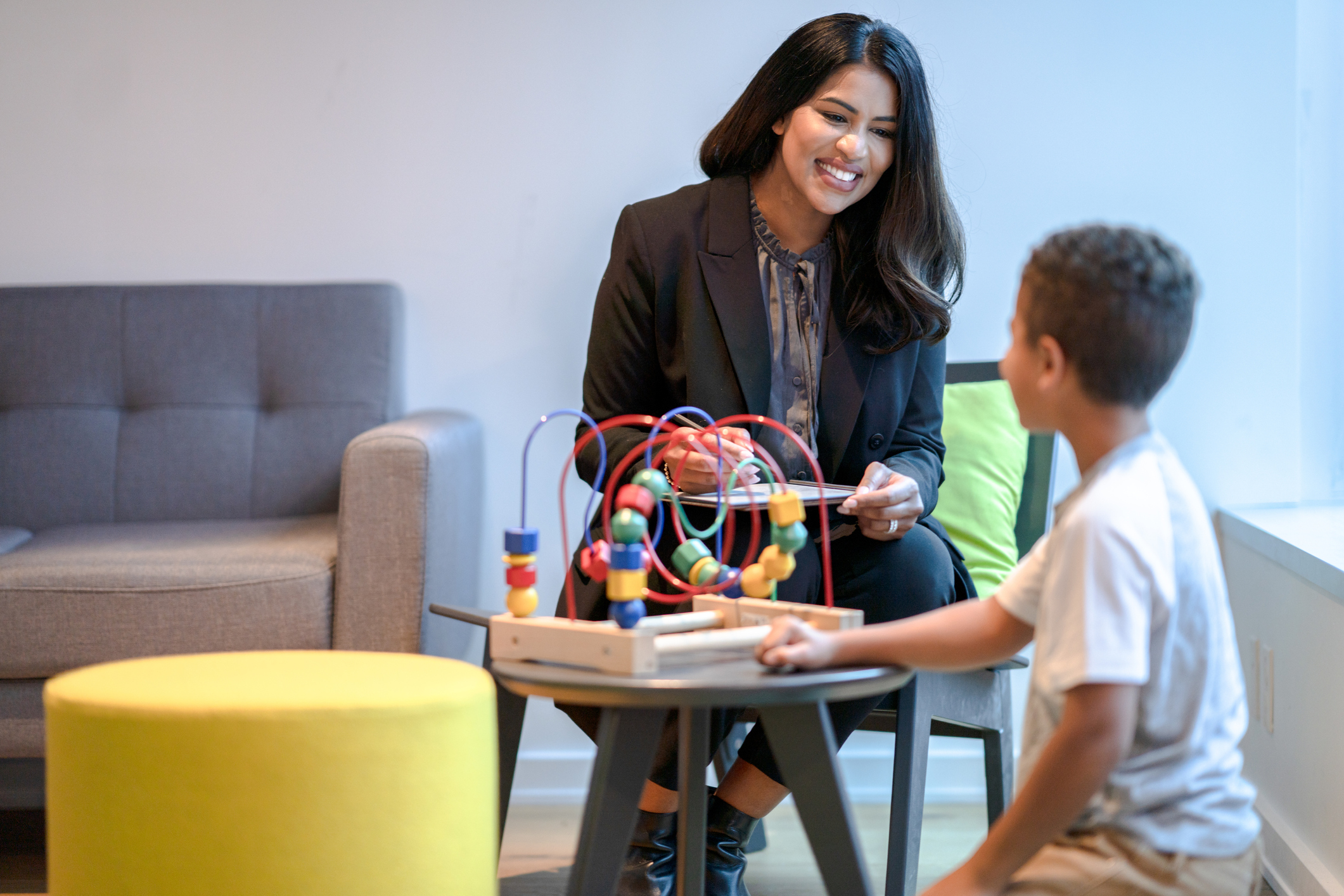What ADHD Is
Attention-Deficit/Hyperactivity Disorder (ADHD) is one of the most commonly diagnosed mental disorders in childhood, affecting about 11% of youth. This means that in an average classroom, there are likely 2-3 students with ADHD. White children tend to be identified more often (13%) than Black (11%) or Hispanic (9%) children. Youth start to show symptoms of ADHD around school age (i.e., ages 5-12), and teachers often play a crucial role in first spotting them and communicating concerns to parents.
ADHD is a disorder of executive functioning. Executive functioning is a catch-all term for a variety of advanced thinking skills (e.g., attention, working memory, problem solving, inhibition). You can think of executive functioning as the “manager,” or even sometimes the “brakes” of the brain. These skills allow students to plan, self-regulate, resist impulses, and engage in goal-directed behavior. If these skills are impaired, as is the case with ADHD, students might exhibit a variety of challenges.
There are three subtypes of ADHD. In the Inattentive Presentation, students struggle primarily with sustained attention, organization, attention to detail, and follow-through on tasks. Another subtype is the Hyperactive-Impulsive Presentation, wherein the youth may show excessive physical activity, excessive talking, and impulsivity (e.g., interrupting). The final is the Combined Presentation, wherein a student shows significant symptoms of both inattention and hyperactivity/impulsivity. The three different subtypes are typically diagnosed about evenly in children, with the inattentive subtype becoming the most prevalent moving into adolescence and young adulthood. Notably, ADHD is diagnosed two times more often in boys than in girls, perhaps because females more often have only subtle inattentive symptoms relative to the more overt hyperactivity symptoms young males tend to display.
By definition, ADHD symptoms affect children in multiple areas of their development and functioning. Youth may struggle to reach their potential academically due to focus issues. However, they may also have difficulties meeting expectations in terms of social, behavioral, recreational, adaptive, and/or personal safety skills. For instance, symptoms may create barriers to children making or keeping friends, staying out of trouble in class, being able to participate on sports teams, or keeping track of their belongings. In adulthood, untreated ADHD can become more consequential and may be associated with long-term academic and career underperformance, underemployment, financial challenges, interpersonal difficulties, risk-taking behavior, substance abuse, and other negative health sequelae.
What ADHD Isn’t
Most people have heard of ADHD; thus, most people believe they understand what it is. However, many myths regularly circulate about the disorder. ADHD is not willfulness or laziness or “an excuse.” It is not a defect of character or a conduct disorder. Just like it is not “lazy” for someone with a visual impairment to need special help (e.g., glasses or a seat near the front) to see well, it is not lazy for a student with ADHD to get more fatigued trying to sustain attention relative to others. It is genuinely harder for them. Likewise, ADHD is not the result of poor parenting, eating too much sugar, or playing too many video games. In fact, ADHD is believed to be caused primarily by genetic and neurological factors. In other words, people are born with it.
What Students with ADHD Might Need From You
Given the potentially serious long-term consequences of untreated or severe ADHD symptoms, early intervention is an important process, and there are a variety of evidence-based strategies for helping students with ADHD cope and find success:
- Implementing strong, predictable routines and schedules helps improve the functioning of children with ADHD.
- Children with ADHD may struggle to develop the organizational skills that naturally come to peers. Explicitly teaching options for organizational strategies may help them find what works best for them.
- Providing regular physical activity, such as recess, sports, or dance, may help regulate both core ADHD symptoms and improve mood.
- Youth with ADHD can experience a lot of frustration, self-doubt, and even social rejection. As such, providing basic reassurance and positive social opportunities for them can be very important for their overall well-being.
- As part of the neurodiverse community, youth with ADHD may need to do things differently than others. Maybe a child needs written instructions or instructions with pictures; maybe they need to stand while reading or completing an assignment; or maybe an adolescent wants to take classes that focus on more hands-on learning (e.g., music, shop, technology). It’s okay to give them leeway to do things in a way that makes sense to them and that will increase opportunities for success.
When Further Support Is Needed
If you have made it this far reading this article, you likely want nothing but the best for a child with ADHD in your life. Know that there are a lot more comprehensive resources available to support you in supporting them. ADHD is considered chronic, (non-curable), but there are many safe and evidence-based options for managing symptoms. Stimulant medications (e.g., Ritalin, Adderall) have been used for the treatment of ADHD symptoms in children since the 1950’s, and these are generally considered some of the most effective medications for any psychological disorder. There are also a variety of behavioral interventions, including evidence-based psychotherapies, behavior planning, and parent training that can help children and families learn new skills to cope with and minimize the impact of ADHD. A psychologist, school psychologist, or mental health counselor can work with you to learn more about behavioral options. Finally, children diagnosed with ADHD who struggle in school may be entitled to academic accommodations and/or special education supports through their school. (Please see our previous blog on how to seek services in the schools).
Further Resources
- National Institute of Mental Health (NIMH): https://www.nimh.nih.gov/health/topics/attention-deficit-hyperactivity-disorder-adhd
- Centers for Disease Control and Prevention (CDC): https://www.cdc.gov/adhd/index.html
- Mayo Clinic: https://www.mayoclinic.org/diseases-conditions/adult-adhd/symptoms-causes/syc-20350878
- Children and Adults with Attention-Deficit/Hyperactivity Disorder (CHADD): https://chadd.org/
—
About the Author
Taylor Thompson, Ph.D., serves as a distance learning developer and literature coder on the Services and Products Development team at PracticeWise. Learn more about Dr. Thompson on the PracticeWise team page.







